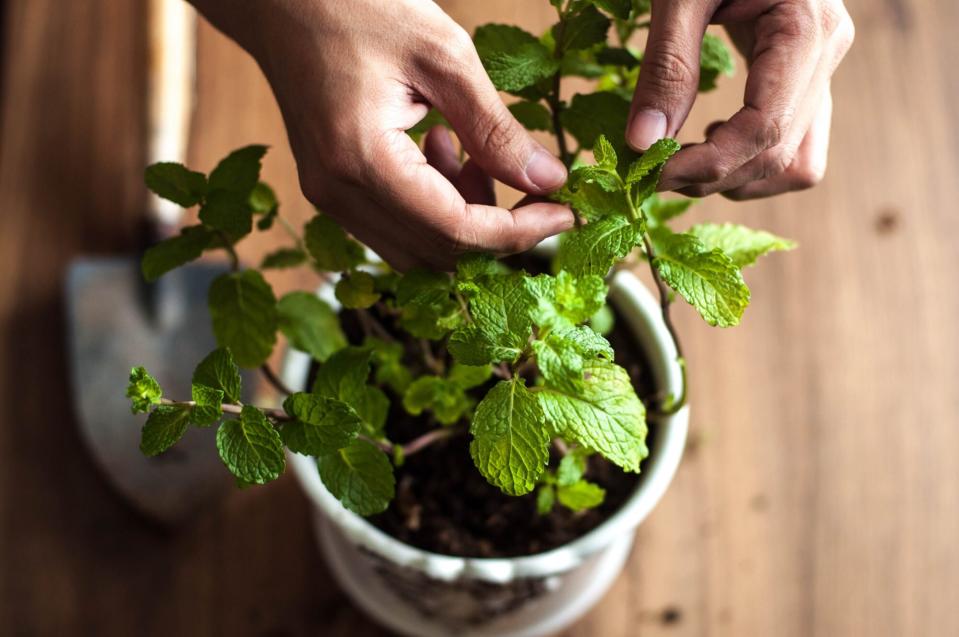How to Grow, Harvest, and Store Mint
Mint can be used in food and medicine, or as pest repellent, a digestion aid, and breath refresher; simply put, it's an extremely versatile herb. While there are 600 varieties of mint, spearmint and peppermint are the types most commonly planted, but that doesn't mean you should discount other types—test out a few different varieties of mint to find the one you'd most like to grow. And once you do know which type of mint you'd like in your garden, you'll find that the herb's adaptability and resilience makes it easy to grow and cultivate, even for novice gardeners. Farmer Eric Tomassini of Ave 33 Farm has spent 12 years growing many varieties of vegetables and says that mint is the most "easy-going." In fact, it's so easy to grow that it often takes over anywhere it's planted, which is why most people recommend growing the herb in a container.
Related: 10 Reasons to Grow Your Own Healing Herb Garden

Karl Tapales / Getty Images
How to Grow Mint Outdoors
When you plant perennial mint, the herb will die back in the fall and return spring after spring without being replanted. If you're planting mint for the first time, Tomassini notes that spring is the optimal time of year to do so. The herb will thrive in a partially shaded area in your garden and in soil that isn't too rich—Tomassini adds compost to his mint plants twice a year.
Keeping your plant watered is important but it will survive some forgetfulness. When thinking about growing mint, Tomassini warns, "Mint spreads through its roots so grow it in a container because wherever you put it, it's going to take over."
How to Grow Mint Indoors
Mint is a low-maintenance option for indoor herb gardens—simply add soil, seeds, and water to your favorite pot and you'll be well on your way. Make sure to keep your plant in an area that is partially shaded, as direct sunlight will dry it out. Also be sure to keep an eye on the soil, as you want to make sure that your mint stays moist. Frequent pruning, according to the New York Botanical Garden (NYBG), will help your mint grow into a bushier, fuller plant. If you're wondering how much to cut back, the NYBG recommends cutting back perennial herbs to a third of their size when pruning.
How to Store Mint
After picking the leaves from your healthy and aromatic plant, store any extra to be used at a later date. Deputy food editor Greg Lofts says to store fresh-cut herbs in a water-filled glass, with a produce bag wrapped around the top and tied in place, which creates something of a greenhouse effect.
How to Harvest Mint
The Missouri Botanical Gardens suggests harvesting herbs when the flower buds are just beginning to form but before they open, as this can impact the flavor profile of the leaves. At this stage, the essential oils are at their highest, making them the most flavorful. The time of day to harvest also matters, according to the Missouri Botanical Gardens. This should be done in the morning after the dew has gone and before the sun gets too hot, because the heat causes the oils to evaporate from the leaves, altering their smell and flavor.
To harvest mint, the Old Farmer's Almanac says to cut the stems down to about an inch above the ground. If you cut too much, don't worry. According to Tomassini, "Since [mint] spreads through the roots you can cut it down to soil level and it will regrow if it gets a bit overgrown."

